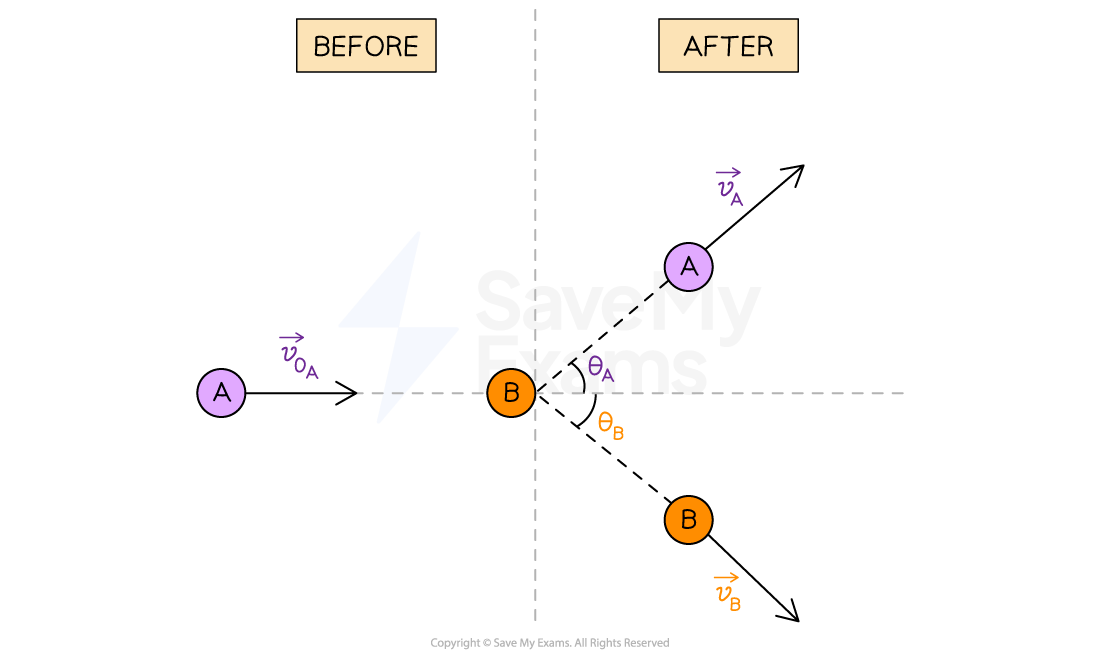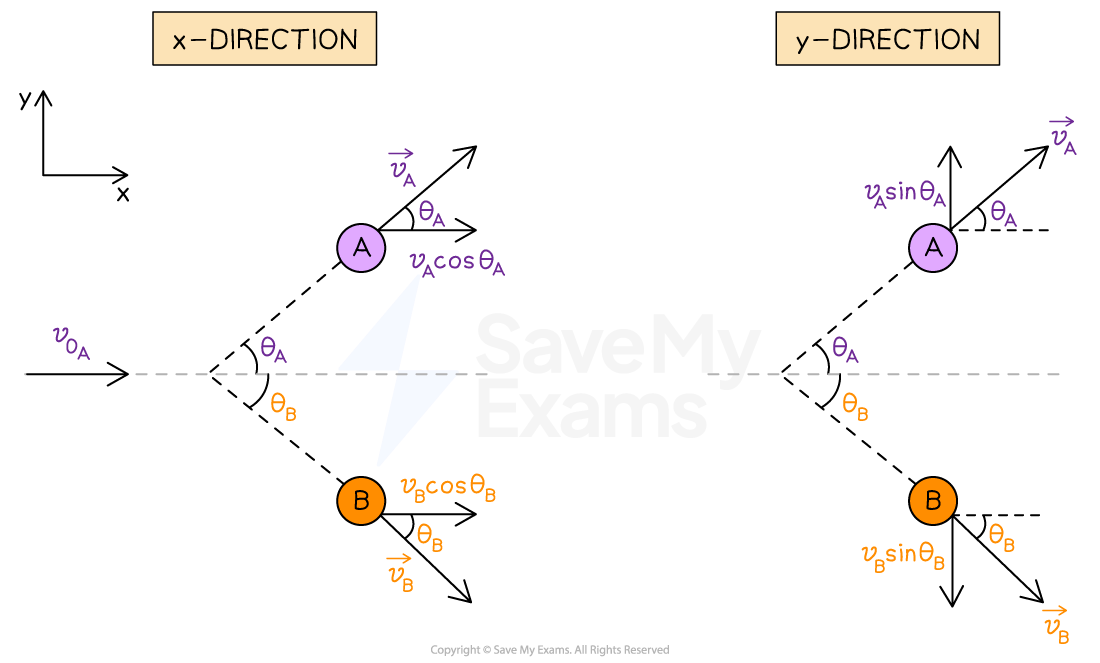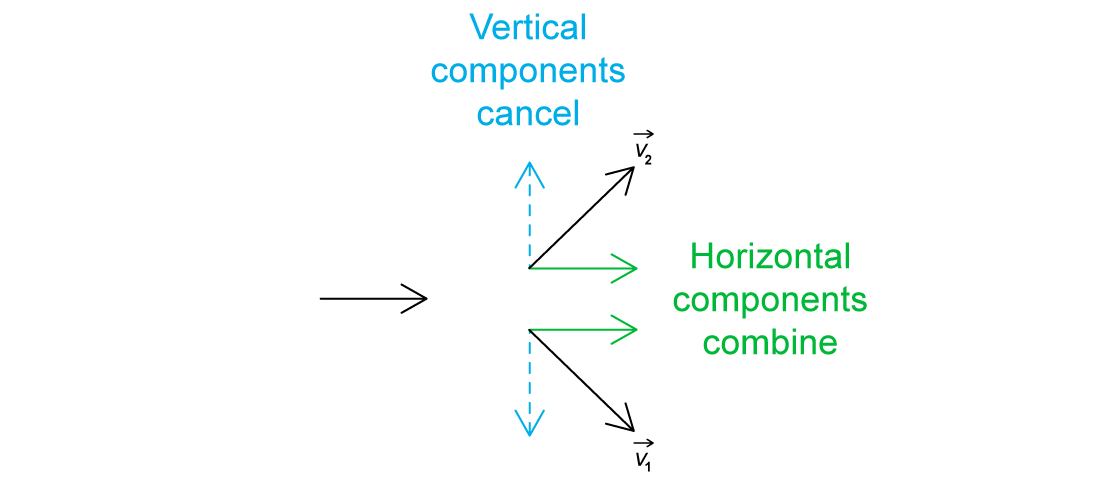Momentum in Collisions (College Board AP® Physics 1: Algebra-Based): Study Guide
Momentum in collisions
The conservation of momentum principle can be used to analyze collisions
A collision is defined as
An event in which two or more moving objects come together and exert a force on each another
In a collision, it is assumed that
the internal forces between objects are much larger than the net external force exerted on the system
the time interval during which the momentum changes is very short
Collisions in one dimension
Collisions in one dimension (1D) usually involve two objects interacting on a single straight line
This means the velocity vectors before and after the collision are directed along the same axis and can be either positive or negative
When solving problems involving collisions in one dimension:
identify the objects included in the system, making sure there are no net external forces
write expressions for the momentum of each object before and after the collision
write expressions for the total momentum of the system before and after the collision
apply the conservation of momentum principle
solve for the unknown quantity

Applying the conservation of momentum principle (defining the positive direction to the right):
Since the velocity of each object is directed along the same axis, the vector notation can be removed:
Collisions in two dimensions
Collisions in two dimensions (2D) usually involve an interaction between two objects in a plane
This means the velocity vectors before and after the collision may have both horizontal and vertical components
When solving problems involving collisions in two dimensions:
identify the objects included in the system, making sure there are no net external forces
write expressions for the x- and y- components of the momentum of each object before and after the collision
write expressions for the total momentum of the system in each direction before and after the collision
apply the conservation of momentum principle to each direction separately
solve for the unknown quantity using Pythagoras' theorem

If no external forces act on a system, horizontal and vertical components of momentum are conserved
Applying the conservation of momentum principle:
The components of the velocities in the x-direction are:
The components of the velocities in the y-direction are:

Worked Example
A particle moves to the right and collides with a stationary particle. The direction of the second particle after the collision is shown below.

Which of the following is a possible direction of the first particle after the collision?

The correct answer is C
Answer:
Step 1: Analyze the scenario
Before the collision, the total momentum is directed horizontally, as momentum is in the same direction as the velocity
The total momentum of the system must be conserved
Therefore, the net momentum after the collision must also be horizontal
Step 2: Apply the principle of conservation of momentum
Since particle 2 is moving up after the collision, particle 1 must move down at the same angle to cancel out the vertical component of the momentum
This is shown by option C

Examiner Tips and Tricks
In AP Physics 1 you will be expected to tackle conservation of momentum problems in one dimension both quantitatively and qualitatively, whereas for problems in two dimensions, you will only be expected to tackle these qualitatively and semiquantitatively.
Exam questions will predominantly be focused on your ability to set up the equations properly and reason about how changing a given mass, speed, or angle would affect other quantities.
In AP Physics 2, you will be expected to solve conservation of momentum problems in two dimensions that include one unknown final velocity, so it's worth getting to grips with the mathematics involved now.

Unlock more, it's free!
Did this page help you?